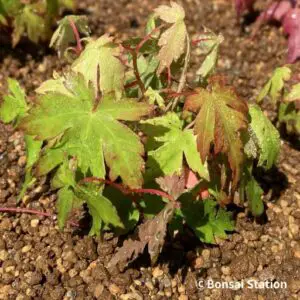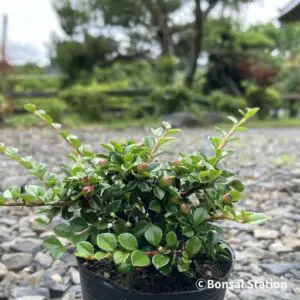Bonsai trees are in general considered difficult to maintain and care of. But is it true for mini bonsai trees?
Mini bonsai trees are easier to grow than normal bonsai trees, which need a certain technique and a long period of time to be styled in a perfect shape. Mini bonsai trees are ready to be potted, displayed and admired after three years of their propagation.
Are Mini Bonsai Trees Hard To Grow?
Mini bonsai trees are easier to grow than normal bonsai trees because they need;
- less time to fully mature, and,
- less maintenance as well as technique.
Let’s discuss this in detail.
Less Time To Fully Mature
Mini bonsai trees are ready to be potted, displayed and admired after three years of their propagation, in contrast to normal bonsai trees which usually take decades before fully styled.
When plants are planted in small pots, they mature in much shorter years than they grow in their natural state. But why do plants in pots need less time to fully mature?
Growth of plants in nature
In the natural state, trees grow their roots as much as the location allows, absorbing nutrients and water. Their trunk grows upwards.
After several years to a few decades depending on the species, the root growth slows down and the branches start to spread horizontally instead of growing upwards. Also, at this stage, the tree trunk and branches get thicker and thicker. At maturity, they flower and bear fruits.
Tree growth is closely related to root growth, and the more roots grow, the more branches grow. So, trees that have roots on the ground will grow as high and as wide as they can grow. 10- to 20-year-old trees in nature look young due to their immaturity.
Growth of mini bonsai trees
In contrast to the trees in nature, the roots of a mini bonsai that grow in a limited space will hit the pot after they grow to some extent. The pot will soon be filled up with roots and the roots cannot grow further.
When the roots in the pot stop growing, the trunks and branches of mini bonsai trees also stop growing upwards. The branches then start to spread horizontally and the trunk as well as branches become thicker. The flowers bloom and trees bear fruits.
Even normal bonsai matures in about half the time of a tree in nature. No wonder mini bonsai trees in a fraction of the normal bonsai pot will mature in a much shorter period of time.
Less Maintenance and technique
Mini bonsai trees are easier to be taken care of.
Easily movable
Since mini bonsai pots are small, they require less soil and thus are very light in weight. It makes them easy to move around when you want to prevent your mini bonsai tree from severe weather: too much sunlight in summer or freezing cold in winter.
During winter, you might want to place your mini bonsai tree under the sunlight but in the greenhouse at night. You can easily take your mini bonsai pot in one hand and move them to the place you want.
No need for a huge space
Also, they do not take up much space and you can place them anywhere. For example, you can place them on a tight balcony or by the edge of windows. In fact, about 50 mini bonsai pots can be placed in just 10 square feet.
Easy pruning and wiring
Pruning and wiring are easier for mini bonsai as you can pick the pot up and check/see the tree from every angle. The styling of mini bonsai trees tends to be freer, i.e. no rigid convention- you can enjoy your own mini bonsai styling.
Cheaper in price
Mini bonsai trees are cheaper than normal bonsai trees when you buy one at bonsai stores. Mini bonsai pots are also cheaper than usual bonsai pots, and mini bonsai trees need a lot less soil and fertilizers.
Costs of maintenance are much lower for mini bonsai trees.
What Are The Challenges In Growing A Mini Bonsai Tree?
Watering is the biggest challenge for growing mini bonsai trees as their pots are tiny and the soil can easily be dried up.
With adequate watering, mini bonsai trees can grow well even without fertilizer. But once the moisture is completely gone from the soil, the trees wither quickly and eventually die. In fact, the main reason for killing a mini bonsai tree is the watering problem.
Obviously, mini bonsai pots dry fast in hot weather. Other than the high temperature;
- younger and healthy trees
- trees with large leaves
tend to dry faster. When it dries, the surface of the soil becomes white. Watering should be done before the soil is completely dry. The frequency of watering depends on the type of mini bonsai and the season.
For more details on watering mini bonsai trees, please check the following post.
What Is The Easiest Mini Bonsai Tree For A Biginner?
Followings are the easiest mini bonsai tree for a beginner.
Japanese Maple Tree

Maple mini bonsai in training pot
- Easy to propagate from seed and cuttings
- A lot of small branches after pruning
- Growth rate faster
Cotoneaster

Cotoneaster in training pot
- Easy to propagate from cuttings
- Capable of bearing hard pruning
- Very small leaf size
- Easy flowering and berrying
Camellia
- Strong and capable of bearing hard pruning
- Requires a moderate level of maintenance




